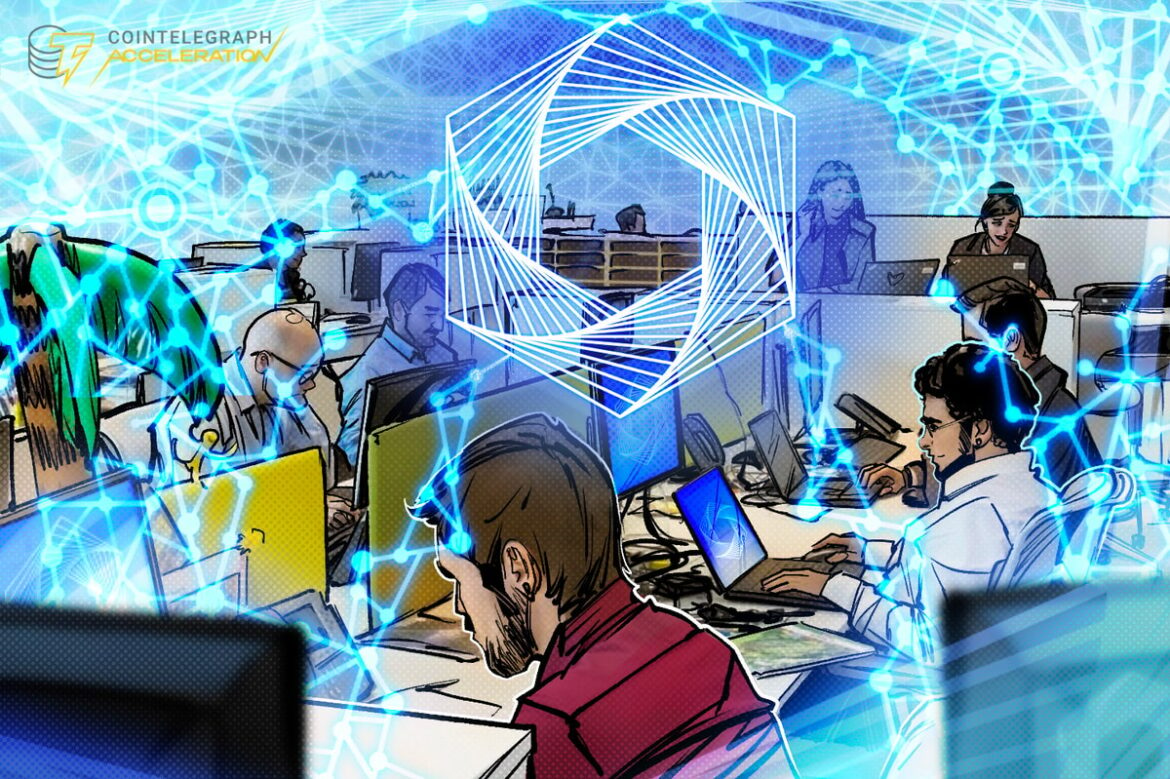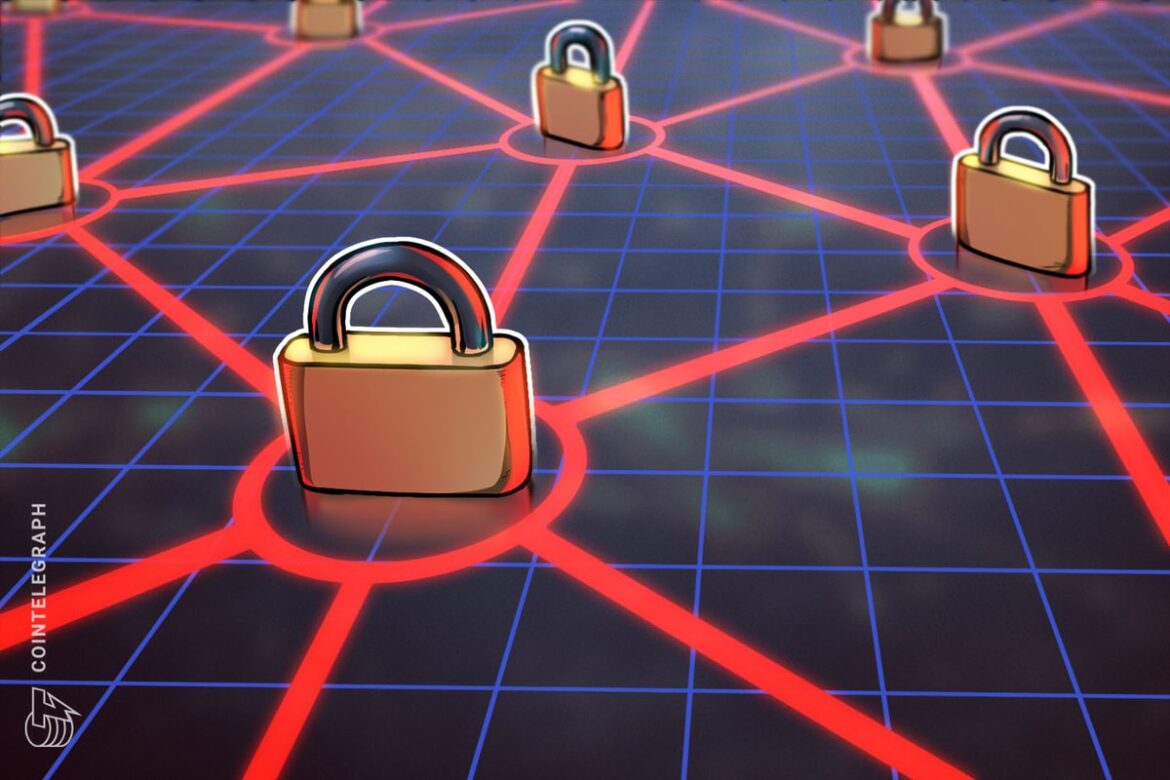 Universal loyalty programs can serve as potent tools, not only forging a direct link between a brand and its consumers but also influencing the latter’s shopping behaviour, Gennady Volchek, the CEO of the loyalty rewards app Shping, has said. However, by harnessing the power of blockchain and cryptocurrency, these loyalty programs empower brands to connect […]
Universal loyalty programs can serve as potent tools, not only forging a direct link between a brand and its consumers but also influencing the latter’s shopping behaviour, Gennady Volchek, the CEO of the loyalty rewards app Shping, has said. However, by harnessing the power of blockchain and cryptocurrency, these loyalty programs empower brands to connect […]
Source link
Web3
In this article, we will explore the finest Web3 and DeFi wallets that offer substantial advantages to crypto users. While Web3 wallets and DeFi wallets share a strong connection, it’s important to understand their distinctions. By highlighting the top wallets in both categories, we aim to provide users with valuable insights into the wallets that can enhance their Web3 and DeFi experiences.
Web3 wallets are specifically crafted to engage with decentralized applications (DApps) on blockchain networks, empowering users with the essential tools to securely oversee their digital assets and participate in the realm of decentralized web.
Essential Aspects To Note Regarding Web3 Wallets
Cross-Chain Support: Most Web3 wallets support multiple blockchain networks, allowing users to access and manage various DApps and different cryptocurrencies from a single interface.
Seamless DApp Interaction: Web3 wallets allow users to seamlessly connect and interact with a wide range of DApps. They provide a convenient way to authenticate with DApps, sign transactions, and manage account balances.
Enhanced Security Features: Web3 wallets optimizes security measures, such as encrypted storage of private keys and protection against phishing attacks. They often offer features like two-factor authentication and recovery options to ensure the safety of user funds.
Essential Features Of DeFi Wallet
DeFi wallets are a specialized category of Web3 wallets designed specifically for the decentralized finance ecosystem. These wallets offer advanced functionalities and specific features essential for engaging in diverse DeFi protocols like lending, borrowing, yield farming, and staking. By catering to the unique requirements of DeFi, these wallets empower users to seamlessly participate in the decentralized financial landscape. These wallets provide supplementary features specifically designed to cater to the needs of DeFi users.
Here are some characteristics of DeFi wallets:
Token Swapping and Yield Farming: DeFi wallets often include built-in features for token swapping and yield farming. Users can swap tokens directly within the wallet interface and participate in yield farming to earn rewards.
DeFi Protocol Integration: DeFi wallets integrate with popular DeFi platforms, enabling users to easily access and interact with lending protocols, decentralized exchanges (DEXs), yield farming platforms, and more.
Gas Optimization: Gas optimization features enable users to estimate and adjust transaction fees, ensuring cost-efficient interactions with DeFi protocols.
Note: DeFi and Web3 share some common features, as they both operate within the broader context of blockchain technology and decentralized applications (DApps).
Examples Of Enhanced Web3 And DeFi Wallets
Metamask Wallet
MetaMask is a popular and user-friendly Web3 wallet that has garnered considerable recognition within the cryptocurrency community. Serving as a browser extension wallet that seamlessly integrates with the Ethereum network, users can easily manage their Ethereum-based assets, including Ether (ETH) and ERC-20 tokens.
MetaMask also features a built-in DApp browser, enabling direct access and interaction with a wide range of Ethereum-based decentralized applications (DApps). The wallet prioritizes security by implementing encrypted storage, password protection, and optional hardware wallet integration.
Additionally, MetaMask supports token swapping through decentralized exchanges (DEXs) like Uniswap and SushiSwap, along with integration with various DeFi platforms for lending, borrowing, yield farming, and other DeFi activities. It also offers compatibility with multiple Ethereum test networks for testing and development purposes.
MetaMask supports various networks in addition to the Ethereum mainnet. A few of the numerous networks supported by MetaMask are Binance Smart Chain (BSC), Arbitrum(ARB) and Polygon (MATIC), among others.
Straightforward Guide On How To Get The Metamask Wallet
The first step is to visit the authentic Metamask website and click on the “Get Chrome Extension” or “Get Firefox Add-On” button, depending on your browser choice.
See the Chrome browser Illustration below:

After clicking on the “Add to Chrome” button, a popup window will appear, asking for confirmation to add the extension. Click “Add Extension” to proceed.

Once the extension is installed, you will see the MetaMask icon in your browser toolbar. Click on the icon to launch MetaMask. You will be presented with the option to create a new wallet.

Once that is done, follow the on-screen instructions to create a new wallet.
In the final step, MetaMask will provide you with a unique seed phrase consisting of 12 or 24 words. Write it down and keep it securely offline. Confirm your seed phrase as prompted by MetaMask by selecting the words in the correct order, after which you can start using MetaMask to manage your Ethereum-based assets, interact with DApps, and participate in DeFi activities.

Keplr Wallet For Web3
Keplr is a web3 wallet primarily designed for interacting with decentralized applications (DApps) on the Cosmos network. However, it offers support for specific decentralized finance (DeFi) functionalities within the Cosmos ecosystem. The Keplr wallet is known to support networks like Celestia, Osmosis, Terra, and Secret Network.
How To Get And Set Up Keplr Wallet
To begin, you should install the Keplr extension with the appropriate extension store for your browser, such as the Chrome Web Store. To Download, click on the “ Add to Chrome” button as illustrated below:

When creating a new wallet, carefully follow the instructions displayed on your screen to establish a robust password and consent to the terms of use. Remember to store your password securely since it is essential for accessing your wallet (If you have an existing wallet, select the “Import Existing Wallet” option and follow the instructions).
Write down your recovery or seed phrase and store it securely. Remember, it is advisable to never store your seed phrase online due to the risk of being hacked.

After setting up or importing your wallet, connect to the desired network or blockchain supported by Keplr. Once connected, you can start interacting with Cosmos ecosystem DApps. Explore the available DApps and features, and follow on-screen instructions to use them with your Keplr wallet.

Phantom Wallets
Phantom is a widely used cryptocurrency wallet specifically created for the Solana blockchain. It provides an intuitive interface and smooth integration with Solana-based decentralized applications (DApps), enabling users to securely manage, transfer, and receive digital assets within the Solana ecosystem.
How To Get Phantom Wallet
To get started, install the Phantom extension from the relevant extension store for your browser, like the Chrome Web Store. Click on the “Add to Chrome” button, as shown in the illustration below:

To set up your Phantom wallet, simply click on the Phantom icon located in your browser’s toolbar, which will launch the wallet interface. From there, follow the on-screen instructions to either create a new wallet or import an existing one using your recovery phrase or private key.

Set a strong password you can remember and save recovery phrases offline (do not store on the device).

Once your wallet is set up, you can conveniently access it at any time by selecting the Phantom icon in your browser’s toolbar. This grants you the ability to manage your digital assets, engage with Solana-based DApps, and carry out various wallet-related tasks.
UniSat Wallet
UniSat Wallet is an open-source Chrome extension that provides a secure and user-friendly solution for storing and transferring bitcoins and Ordinals on the Bitcoin blockchain. It offers features like immediate access to unconfirmed transactions, enabling faster inscription operations without a full node. Additionally, it supports the storage and transfer of BRC-20 tokens, allowing users to manage both bitcoins and BRC-20 tokens in one wallet.
How To Get UniSat Wallet For Web3
To begin, install the UniSat extension from the relevant extension store for your browser, like the Chrome Web Store. Click on the “Add to Chrome” button, as shown in the illustration below:

For the next step, simply click on the UniSat icon located in your browser’s toolbar, which will launch the wallet interface. From there, follow the instructions to either create a new wallet or import an existing one using your recovery phrase or private key.

Once your wallet is set up, you can conveniently access it at any time by selecting the UniSat icon in your browser’s toolbar.

Trust Wallet
Trust Wallet is a versatile wallet that serves as both a decentralized finance (DeFi) and a Web3 wallet. It enables users to interact with decentralized applications (DApps) and protocols within the DeFi ecosystem, including decentralized exchanges, lending platforms, and yield farming protocols. Additionally, it integrates with the Web3 ecosystem, allowing users to interact directly with blockchain networks, sign transactions, and securely manage their digital assets on platforms like Ethereum and other compatible networks.
How To Get Trust Wallet For Web3
First, users can download the Trust Wallet app or install the Trust Wallet extension from the relevant extension store for their browser or mobile device, like the Chrome Web Store. Click on the “Add to Chrome” button, as shown in the illustration below:

Next, simply click on the Trust Wallet icon located in your browser’s toolbar, which will launch the wallet interface. From there, follow the instructions to either create a new wallet or import an existing one using your secret phrase as instructed in the image below:

Once you have meticulously set up your password and safely stored your secret phrase offline, you will gain access to your Trust Wallet. With these security measures in place, you can securely and confidently log into your Trust Wallet account and manage your digital assets.

Exodus Wallet
Exodus Wallet is a widely used software wallet for cryptocurrencies, offering users a secure means to store, manage, and trade various digital assets. It is accessible as a desktop application compatible with Windows, Mac, and Linux systems, along with a mobile app for iOS and Android devices. Exodus Wallet provides support for multiple blockchain networks, enabling users to effectively handle and engage with diverse cryptocurrencies. Among the networks supported are Litecoin (LTC), Stellar (XLM), Ripple (XRP), and Bitcoin (BTC).
How To Set Up Exodus Wallet
To begin, download and install the Exodus Wallet extension from the appropriate extension store based on your browser, such as the Chrome Web Store. Locate the “Add to Chrome” button, as depicted in the accompanying image, and click on it to initiate the installation process.

To proceed, just click on the Exodus icon situated in the toolbar of your browser. This action will open the wallet interface, where you can then follow the provided instructions to either generate a new wallet or import an existing one using your recovery phrase or private key.
For new wallets, do not forget to write down your recovery phrase in a safe place and do not store it online. Additionally, it is advisable to not take screenshots as well.
Next, Click on the “Create New Wallet” and carefully set up your password or “I Have A Wallet” button using your secret phrase to get started.
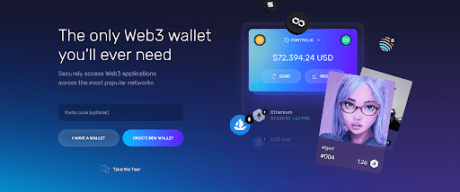
Then, you can connect Exodus wallet to a network of your choice and start your trading journey:
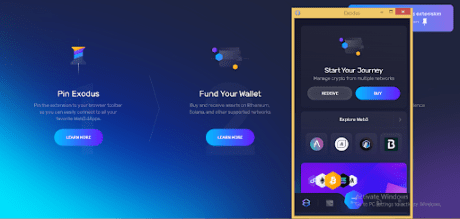
Argent Wallet For DeFi
Argent Wallet is a popular non-custodial cryptocurrency wallet that prioritizes simplicity, security, and usability. It serves as a Web3 wallet, offering users a convenient and user-friendly interface to engage with decentralized applications (DApps) and the broader Web3 ecosystem.
By integrating with Ethereum and compatible networks such as xDai, Polygon (MATIC), and Ethereum (ETH), Argent Wallet empowers users to manage their digital assets and actively participate in various Web3 activities. With its focus on user experience and compatibility with multiple networks, Argent Wallet provides a versatile solution for individuals seeking a seamless and secure Web3 wallet experience.
How To Get And Set Up Argent Web3 Wallet
To get started, you’ll need to install the Argent extension for your browser by visiting the appropriate extension store, such as the Chrome Web Store. Look for the “Add to Chrome” button, which is depicted in the accompanying illustration. Click on that button to initiate the installation process.
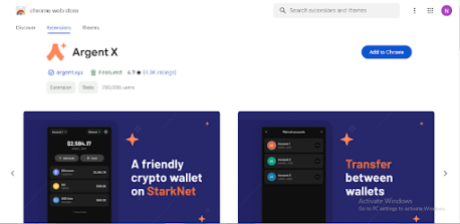
Next, if you’re a new user, click on “Create a new wallet,” and you will be prompted to create a password.

To securely manage and interact with digital assets, decentralized applications (DApps), and the Web3 ecosystem, save your recovery phrase (write it down. do not store it on your device), and your Argent wallet will be ready to use.

OKX Wallet For DeFi
OKX Wallet is a prominent non-custodial wallet that provides users with the ability to securely manage their cryptocurrencies, non-fungible tokens (NFTs), and digital assets within a unified platform.
With OKX Wallet, users have the capability to purchase, trade, earn, and oversee their digital assets across more than 50 blockchains, including Bitcoin, Ethereum, OKT Chain, Solana, BSC, and Aptos, all available in over a dozen languages.
How To Set Up OKX Wallet
To set up using the Chrome browser extension, click on the ‘Add to Chrome” button in the top right corner, as shown in the image below:

Next, select the “Create Wallet” option as shown below:

OKX will present users with the option of creating wallets with either seed phrases or hardware wallets. In the absence of hardware wallets, as in this case, select the “seed phrase” option.

Set the password, verify the seed phrase, and your OKX wallet will be ready to use. Write down your seed phrase and store in a safe place. Do not store online.

Downloading DeFi And Web3 Wallets On Mobile Phones
The wallets listed in this guide also have mobile versions which are available on the app stores of your mobile phone. Navigate to the Apple App Store for iOS or the Google Play Store for Android, input the name of the wallet you want to download in the search bar, make sure you have the correct app and click “Download.”
To set up the wallets on mobile phones, follow the same steps outlined in this guide to get started, and your wallets will be set up.
Conclusion
In conclusion, Web3 and DeFi wallets offer users enhanced digital asset management and participation in decentralized applications. Web3 wallets provide cross-chain support, seamless DApp interaction, and enhanced security features, while DeFi wallets cater specifically to the decentralized finance ecosystem with functionalities like token swapping and yield farming. Understanding these unique characteristics helps users make informed choices.
Examples of enhanced Web3 and DeFi wallets worth exploring have been mentioned in this article. Staying informed about the latest developments in this evolving technology is crucial for unlocking the full potential of decentralized applications and ensuring asset security.
Featured image from Blockbuild.africa
Disclaimer: The article is provided for educational purposes only. It does not represent the opinions of NewsBTC on whether to buy, sell or hold any investments and naturally investing carries risks. You are advised to conduct your own research before making any investment decisions. Use information provided on this website entirely at your own risk.
In Geneve, Switzerland, Decentral House, a new initiative to unite the blockchain and Web3 space, has emerged. On the night of December 14th, several industry leaders from organizations worldwide discussed how blockchain is transforming the world.
Decentral House: Merging The Physical With The Digital In One Spot
Decentral House aims to serve as a hub for existing blockchain projects. This will enable them to collaborate, bring their ideas to life, and participate in initiatives supported by major players in the Swiss financial industry.
The new hub was created to provide these projects with a place to materialize the discussions and ideas of Conferences and Summits that take place throughout the year. According to Decentral House founder and managing partner at STORM, Sheraz Ahmed, the physical place will integrate with the digital world to drive blockchain adoption.
In the silence of this Decentral House, Ahmed believes that builders can speak about their projects and create a deeper connection. During the event, Ahmed told us:
Decentral House is a centralized meeting point for the decentralized community. There’s a little bit of irony there. We definitely believe that there’s need to break down the silos that are created within our industry. I mean, a lot of people talk online, they build online, but we never really get the chance to meet in person. Even beyond just having a cocktail, a drink, and the likes, but being able to sit down and speak when there is silence. When you go past the small talk, past the, “Hey, how are you? It’s nice weather outside, which event are you going to next? Ah, that’s great. Okay, see you soon.” And when there’s silence, you can really think and have those deeper conversations (…).
Ahmed highlighted the importance of Switzerland for the nascent sector, claiming that while many projects are based on a blockchain, the industry itself is “based on Switzerland.” This is due to the country’s banking system which allows the industry to gain access to capital and a solid legal framework.
In other words, Switzerland is considered a “Safe Haven” for the blockchain community. Decentral House will provide a platform for like-minded individuals and events within this sanctuary.

More Than A Co-Working Space, A Sanctuary
Created as a long-term project running for at least two years, Decentral House will operate as much more than a co-working area. Web3 builders can join the initiative via different tiers and receive access to industry events, specialists in fundraising and compliance, and other services critical for their success in the nascent sector.
The initiative is finalizing deals with major companies and organizations within the Web3 space and legacy sectors. Ahmed firmly believes that Decentral House can be a place that will help all actors work towards adoption and innovation:
(…) if we can bring everyone around the same table, they can then truly create the innovation that we’re seeking. And so in order to do that, we’re creating a two year program that goes through four phases of ideation, iteration, validation, and execution. So we ideate, we brainstorm, create those ideas, we will then iterate on them, maybe there are some better than others. How can we move them? Then we will validate them, validate them with the board, get the funding.
The latter has been a critical question for many industry projects; many have the team and ideas but struggle during their fundraising phase. Others speed up this process and launch ideas that still require refinement. On the latter, Ahmed said:
The fact that they go so quickly today into the real world, they don’t get the funding and the real eyeballs that they need to make it. So they’re going to get that validation from doing the two previous steps. And then once they’re validated, then we will execute on them and activate those proof of concepts, MVPs. And that’s where I truly believe mass adoption will follow.
During the event, members of the Cardano Foundation, the United Nations High Commissioner for Refugees (UNHCR), and the World Trade Organization (WTO) spoke on the impact of blockchain technology and the use cases that can help people in their everyday lives.
Let’s continue with the recap! 🎊
Now it’s time to thank the #speakers, who entertained us with fascinating discussions on the future of the digital economy, the coexistence of real and virtual worlds, and how global organisations are using the potential of #Web3. 🌍 pic.twitter.com/G5trBqLAgx
— Decentral House (@DecentralHouse) December 16, 2023
This was just the first of many debates, connections, and events that will take place in Decentral House to tear down the physical barriers that will allow the digital space to bloom. Ahmed concluded:
(…) people tell me that Washington DC is the UN capital of the world with all the NGOs, et cetera, go there and try to access those people, try to speak with directors of the UN, you will not be able to. You have a barricade of security guards. They also will not want to speak to. (…) So, Geneva and Switzerland break down the barriers. And in order to (encourage) adoption, we need to break down the barriers. We cannot have all of our masks and shields up and try to improve and grow. We need to have those barriers broken down. And that’s why (we picked) Geneva.
Cover image from Unsplash, chart from Tradingview
Disclaimer: The article is provided for educational purposes only. It does not represent the opinions of NewsBTC on whether to buy, sell or hold any investments and naturally investing carries risks. You are advised to conduct your own research before making any investment decisions. Use information provided on this website entirely at your own risk.
Web3 firm sees future where gamers rent out their in-game assets for crypto
Imagine a future where a player is able to rent an in-game item via blockchain, giving them tools to pass a difficult level, or borrow a nonfungible token (NFT) that gives them the ability to try a new game on their wishlist.
Such a feature is one that Polemos co-founder Richard McLaren is hoping will one day become the norm, along with an economy where players rent out their in-game assets for a fee.
In an interview with Cointelegraph, McLaren announced a new partnership between his gaming infrastructure service Polemos and fantasy battle game Illuvium, a move he said would help break down barriers for players looking to get started on Illivium’s platform.
“It just represents a much easier entry point for players financially and widens the base of people who would be prepared to play those games,” McLaren said.

A key pain point for blockchain games is that they often require players to front up significant sums of capital just to get started. Instead, newbies can rent an NFT for a few days and dip their toes in the water more easily, McLaren explained.
“We think that not only will it increase sales, but it’s only increasing your ability to attract players because they can check things out. Players who have these massive inventories, who put the time into your game, have a reason to stick around, which increases retention and player base.”
Polemos’ non-collateralized NFT lending protocol, dubbed “The Armory,” utilizes a pay-up-front model so that players don’t even need to put down collateral to rent the in-game assets.
“You don’t have to cover the value of the asset because we’re confident the technology prevents you from damaging that in any way. So, it opens up this as non-collateralized lending to a much wider audience of people who don’t have the capital to put down to secure an asset.”
While game asset NFT lending might seem like a niche market, McLaren predicts the total market size for game asset lending could grow to somewhere between 30% and 40% of the roughly $2.3 billion that was invested in NFT gaming in 2023.
Related: 40% of crypto game devs are banking on trad gaming in 2024
“The reason for that is rental is really part of your marketing expense as a game studio. So, it’s money paid by players that you don’t receive unless they’re your assets, but they’re paid to other asset holders, which provides a reason for players to play your game,” he said.

“You have major IP and major studios getting into ownership — maybe not blockchain — but definitely into ownership as a mechanic, and renting is a way of making ownership more engaging and more real for a player who is already invested in a game.”
The rental model also offers long-time players and game studios with a warchest of in-game assets the ability to earn income on unused assets.
“You can receive some passive income — maybe not life-changing income — but passive income from those assets, which is a very positive retention mechanic for staying engaged in the game, which we think the gamers will get very heavily involved in.”
As to why game studios would choose to go with his company instead of simply creating their own “walled garden” lending service, McLaren said decentralized public infrastructure removes the need for relying on game studios altogether.
“The concept of player ownership in general relies on public infrastructure. A big part of its appeal is you’re not dependent on the game studio being around forever,” McLaren said. “So, the argument for having lending as a third-party marketplace is very similar to having NFTs in general.”
Additionally, McLaren shared that Polemos was currently closing its strategic pre-sale for a native token due to be launched midway through 2024.
Magazine: Web3 Gamer: Games need bots? Illivium CEO admits ‘it’s tough,’ 42x upside
Chainlink Labs enters into a strategic collaboration with Cointelegraph Accelerator to support Web3 startups
Cointelegraph Accelerator is excited to announce a strategic collaboration with Chainlink Labs, the primary contributing developer of the industry-standard decentralized computing platform Chainlink. This collaboration will align the Cointelegraph Accelerator and Chainlink BUILD programs, helping drive innovation and accelerate the growth of next-gen Web3 projects.
Cointelegraph Accelerator and Chainlink Labs join to empower Web3 innovation
The Cointelegraph Accelerator is a global program that supports early-stage and up-and-coming Web3 startups. As part of the collaboration with Chainlink Labs, the Cointelegraph Accelerator will provide Chainlink BUILD projects with marketing support, media strategy, social media playbooks, user acquisition guides, access to the largest industry events, and other benefits that help accelerate their growth.
On the other hand, Chainlink Labs will engage with projects under the wing of the Cointelegraph Accelerator by offering technical support, mentorship and providing access to Chainlink’s decentralized computing platform and expanding their builder communities.

The Chainlink platform can provide protocols with access to real-world data, ways to securely transfer tokens and send messages cross-chain, and leverage offchain compute.
Together, Cointelegraph Accelerator and Chainlink Labs will provide startups with technical and marketing support needed to help them find product-market fit, accelerate their growth, and securely scale their applications. According to Paul Solntsev, Head of Cointelegraph Accelerator:
“We’re excited to align the Cointelegraph Accelerator and Chainlink BUILD programs and better support projects in our ecosystem. This strategic collaboration with Chainlink Labs will help accelerate the growth of Web3 startups and drive blockchain innovation.”
About Chainlink
Chainlink is the industry-standard decentralized computing platform powering the verifiable web. Chainlink has enabled over $9 trillion in transaction value by providing financial institutions, startups, and developers worldwide with access to real-world data, offchain computation, and secure cross-chain interoperability across any blockchain.
Chainlink powers verifiable applications and high-integrity markets for banking, DeFi, global trade, gaming, and other major sectors. Learn more about Chainlink by visiting chain.link or reading the developer documentation at docs.chain.link.
About Chainlink Labs
Chainlink Labs is the primary contributing developer of Chainlink, the decentralized computing platform powering the verifiable web. Chainlink Labs is dedicated to the development and integration of Chainlink as the industry-standard platform for providing access to real-world data, offchain computation, and secure cross-chain interoperability across any blockchain.
Chainlink Labs helps power verifiable applications and high-integrity markets for banking, DeFi, global trade, gaming, and other major sectors by collaborating with some of the world’s largest financial institutions, notably Swift, DTCC, and ANZ. Chainlink Labs also works with top Web3 teams, including Aave, Compound, GMX, Maker, and Synthetix. Chainlink Labs was recently ranked in Newsweek’s 100 Most Loved Workplaces 2023 in both the United States and the United Kingdom.
Learn more about Chainlink Labs and explore open roles at chainlinklabs.com.
About Cointelegraph Accelerator
Cointelegraph Accelerator ignites the growth of promising Web3 projects by developing marketing strategies, providing advertorial media coverage, organizing workshops with mentors, and arranging participation in crypto events and introductions to Cointelegraph’s network of institutional investors, exchanges and other partners. The program focuses on Decentralized Finance (DeFi), Nonfungible Tokens (NFT), GameFi, Web3 social, as well as other segments of the broader Web3 industry.
Polygon CDK to power Web3 loyalty program for Indian e-commerce Flipkart

India’s homegrown e-commerce giant Flipkart will use Polygon’s chain development kit (CDK) to launch a Web3 loyalty program.
On Dec. 2, Polygon and Flipkart announced a strategic partnership to effectively position the e-commerce platform into Web3 and the metaverse. This included initiatives such as Flipverse for nonfungible tokens (NFTs), eDAO for metaverse and the FireDrops NFT marketplace.
Building on this partnership, Polygon co-founder Sandeep Nailwal announced on Dec. 7 that Flipkart will use the Polygon CDK to scale its FireDrops Web3 loyalty program.
Main announcement for today@Flipkart, the largest ecommerce and one of the largest payments companies in India is launching an ecosystem chain with @0xPolygon CDK.
This is an game changer for Web3 ecosystem in India. It not only has the potential to attract the top fintech… pic.twitter.com/gItcp4IjqB— Sandeep Nailwal | sandeep. polygon (@sandeepnailwal) December 7, 2023
Flipkart shared plans to use the Polygon CDK as the base to build an Ethereum-based zero-knowledge (ZK) layer-2 network, which can help the e-commerce platform scale future growth and streamline its service.
Flipkart will also use the Polygon CDK to offer a streamlined onboarding experience, dedicated blockspace and low transaction fees to its users, among other services. While announcing the initiative, Nailwal stated:
“This is a game changer for Web3 ecosystem in India. It not only has the potential to attract the top fintech entrepreneurs in India to build Web3, but it also might encourage many other top Enterprise and consumer brands to build their appchains.”
Nailwal also believes that participation from leading organizations will further cement India’s position as a Web3 powerhouse. “Future upgrades to Polygon CDK will also allow for enhanced privacy for transaction data, the ability to run the chain without a token or to use a central bank digital currency and access to liquidity in the greater Polygon and Ethereum ecosystems,” Polygon said.
Related: Polygon blockchain explained: A beginner’s guide to MATIC
Naiwal’s counterpart, Polygon co-founder Jordi Baylina revealed that 2024 will see the amalgamation of Polygon’s various Ethereum layer-2 scaling networks to complete its “Polygon 2.0” cross-chain coordination protocol.
Speaking to Cointelegraph, he said that Polygon 2.0 will test how the Polygon ecosystem’s various networks can scale and integrate through the implementation of zero-knowledge proofs.
Magazine: Slumdog billionaire: Incredible rags-to-riches tale of Polygon’s Sandeep Nailwal
The path from the Bitcoin whitepaper to the bustling ecosystem of Web3 technology has been nothing short of revolutionary. In this guide, we trace the evolution of digital currencies as they pave the way for the Web3 frontier—a new internet paradigm underpinned by blockchain technology and decentralized ideals.
This guide aims to provide a comprehensive understanding of Web3 technology. We’ll delve into the web3 meaning, web3 projects, web3 domains, explore its foundational concepts, and examine how to invest in web3. As we unpack the essence of Web3, we’ll reveal why it’s not just a technological leap, but also a cultural and economic revolution, poised to reshape the internet as we know it.
Introduction To Web3 Technology
In the rapidly evolving landscape of the digital world, Web3 technology emerges as a groundbreaking paradigm shift, redefining how we interact with the internet. Rooted in the principles of decentralization, transparency, and user empowerment, it represents a significant leap from the traditional, centralized web—often referred to as Web2.
At the core of Web3 lies blockchain technology, the same innovative force that brought cryptocurrencies like Bitcoin into the limelight. However, it extends far beyond just digital currencies. It encompasses a wide array of decentralized applications (dApps), smart contracts, and a new generation of internet services and platforms that operate autonomously and are not controlled by any single entity.
Web3 Meaning: A Comprehensive Guide
The web3 meaning captures the essence of a decentralized online ecosystem underpinned by blockchain technology. It is an umbrella term that encapsulates an internet where users have sovereign control over their data, identities, and transactions. This vision for the next web generation stands on the pillars of decentralization, openness, and greater user utility.

Unlike its predecessors, Web3 facilitates a user-centric internet, harnessing the principles of cryptocurrency economics, collective governance, and immutable records. Within ‘what is web3 technology’, we find the blueprint for a participative and interoperable web, where the networks are maintained by the users themselves rather than by tech conglomerates.
Furthermore, the web3 definition extends to include not just the structural and functional changes but also the philosophical shift towards a self-governing, resilient, and equitable digital space.
Web3 Definition
Web3 is defined as the third generation of the internet, characterized by decentralized networks that utilize blockchain technology and token-based economics. It’s a shift from consuming content to owning and contributing to the network’s assets and operations. This succinct web3 definition encompasses a future where the internet operates autonomously, enabled by distributed ledger technology, and is free from the control of centralized authorities.
The Evolution from Web1 To Web2 To Web3.0
The digital world has undergone a significant transformation from Web1 to Web2, and now to Web3.0, each phase marking a pivotal shift in how the internet is structured and utilized. This evolution can be seen as a journey from static web pages to interactive experiences, and finally to a decentralized, user-driven web.

Web1 Meaning
Web1, often referred to as the ‘Static Web,’ was the internet’s first iteration. It was characterized by static websites that were purely informational and offered limited interaction. During this era, content was created by a small group of producers and consumed by the users, who had no direct way to contribute or alter the information. The key aspect of Web1 was its simplicity and ease of access to information, laying the foundation for the more interactive web that followed.
Web2 Meaning
Web2, also known as the ‘Social Web,’ revolutionized the internet by introducing interactivity, social networking, and user-generated content. This era saw the rise of platforms like Facebook, YouTube, and Twitter, where users not only consumed content but also contributed to it, creating a more dynamic and collaborative web experience. The shift to Web2 brought about significant changes in how people connect, share, and communicate online, paving the way for a more connected global community.
Web3 Meaning
Web3.0, or simply Web3, represents the next phase in the evolution of the internet. This iteration is defined by its decentralized nature, leveraging blockchain technology and token-based economics. It’s a paradigm shift from the centralized platforms of Web2, giving users unprecedented control over their data and online interactions.
Web3:// is a concept that exemplifies this change, indicating a move towards a more secure, private, and user-empowered web. Web3 introduces concepts like decentralized finance (DeFi), non-fungible tokens (NFTs), and decentralized autonomous organizations (DAOs), signaling a significant leap towards a more open, transparent, and equitable internet.
Web3 Explained: Beyond The Basics
Delving deeper into the realm of Web3, it’s crucial to move beyond the basics and understand the intricate mechanisms that define this new digital epoch. It’s about a transformative shift in how we perceive and interact with the web—a shift toward a more decentralized, transparent, and user-centric online world.
How Web3.0 Is Changing The Internet Landscape
Web3.0, often simply referred to as Web3, is dramatically altering the internet landscape. This transformation stems from its decentralized nature, distributing power and control across the network instead of centralizing it in the hands of a few dominant players.
This shift in control signifies not just a technological change but a fundamental shift in digital power dynamics. It ushers in an era of increased privacy, enhanced security, and greater user sovereignty, making the internet a more equitable and participatory space. It’s an exciting time, as Web3 opens up new possibilities for creative and economic freedom online. Moreover, it also has the potential to fundamentally disrupt the Web2 business models of platforms like Facebook.
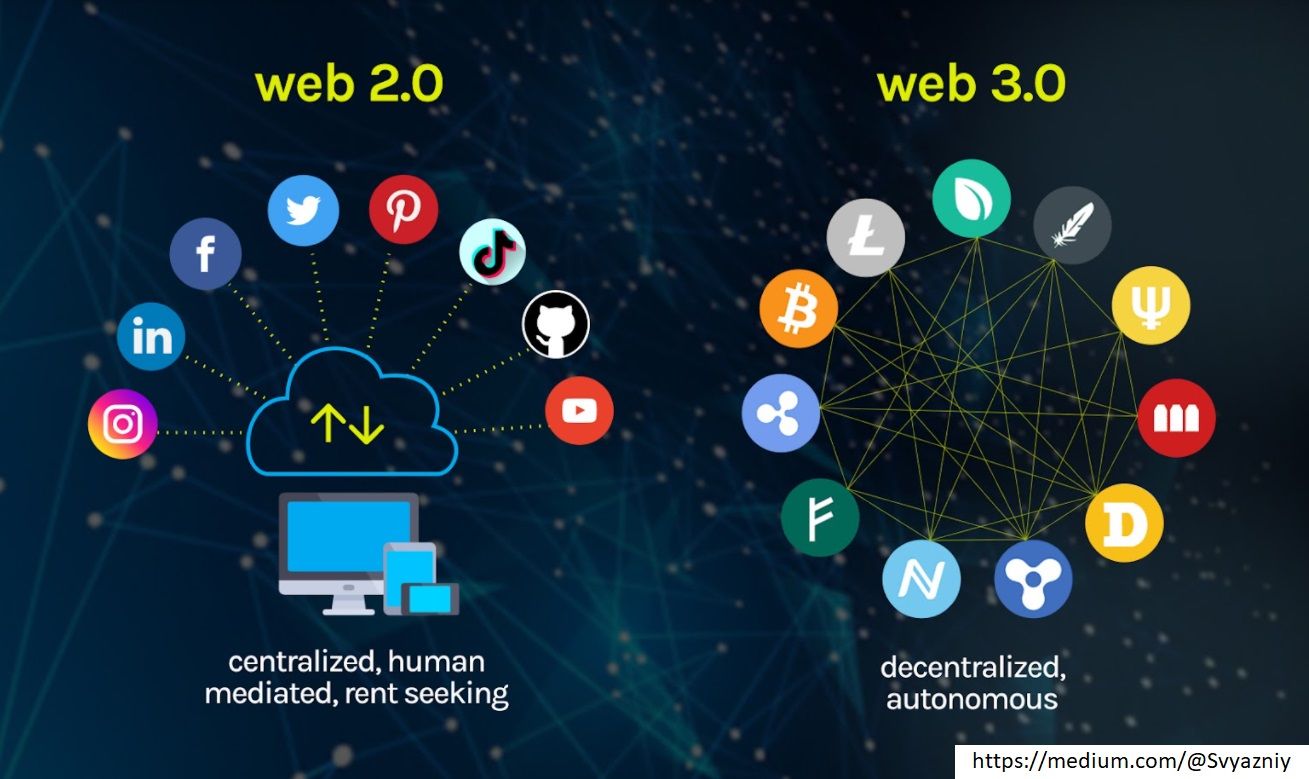
Disrupting Traditional Business Models
Web3’s approach to data ownership and user empowerment directly threatens the established Web2 models. In the Web2 ecosystem, typified by platforms like Facebook, user data is a commodity. These platforms collect and monetize user information through targeted advertising, creating revenue streams heavily reliant on user data. Web3, however, introduces a paradigm where users have full control over their data.
Through blockchain technology, Web3 enables individuals to own and monetize their data, participate in governance, and directly benefit from their contributions to the network. This shift in data ownership and control represents a seismic shift in how online business models function.
For instance, in a Web3-based social media platform, users could earn tokens for their content, engagement, and community contributions. These tokens could represent actual stake in the platform, giving users not just a say in how the platform evolves, but also a share in the economic benefits.
This model starkly contrasts with Web2 platforms, where user activity generates value that primarily benefits the platform owners. It’s model of shared ownership and profits poses a significant threat to the traditional ad-revenue-driven models of Web2 companies.
Impact On Established Tech Giants
Let’s consider a hypothetical scenario where a major platform like Facebook faces a Web3 competitor. In this scenario, the Web3 platform empowers users with control over their data, allowing them to opt into advertising schemes voluntarily and transparently. Users could even earn a share of the advertising revenue generated by their data. This transparency and profit-sharing model could attract users away from traditional platforms, compelling companies like Facebook to rethink their data and revenue strategies.
Moreover, the application of decentralized autonomous organizations (DAOs) introduces a governance model that is more democratic and user-influenced. Users of a DAO-driven platform can propose, vote on, and implement changes to the platform, directly influencing its direction and policies. This level of user involvement and control is unprecedented in the Web2 landscape and could lead to a more user-centric and ethical online platform.
Web3 Is Going Great: Explained
The phrase “Web3 Is Going Great” refers to a website by Molly White, a crypto researcher & critic, software engineer, Wikipedian which is called “Web3 is Going Just Great”. White’s website serves as a critical ledger, chronicling the various scams and fraudulent activities within the crypto and Web3 space. As of November 2023, the site’s ‘Grift Counter’ has tallied a staggering $69.52 billion in financial losses due to these nefarious activities.
Some of the latest examples of frauds covered on the “Web3 Is Going Great” site include:
- Monero Community Crowdfunding Wallet Drained: Monero, focused on privacy, encountered a significant setback when its community crowdfunding system (CCS) was compromised and entirely drained, losing about 2675.73 XMR (approximately $460,000), funded by donations.
- Safemoon Executives Charged For Fraud: The executives behind Safemoon, a crypto token which had its all time high market cap in April 2021 with $17 billion, were charged with defrauding investors. They promised a secure investment but engaged in practices like removing tokens from the liquidity pool, leading to significant financial losses for investors.
- Infringement Lawsuit In The NFT Space: A notable case in the NFT realm involved Ryder Ripps and Jeremy Cahen, who were ordered to pay $1.6 million in a lawsuit over creating identical NFTs to the Bored Ape collection.
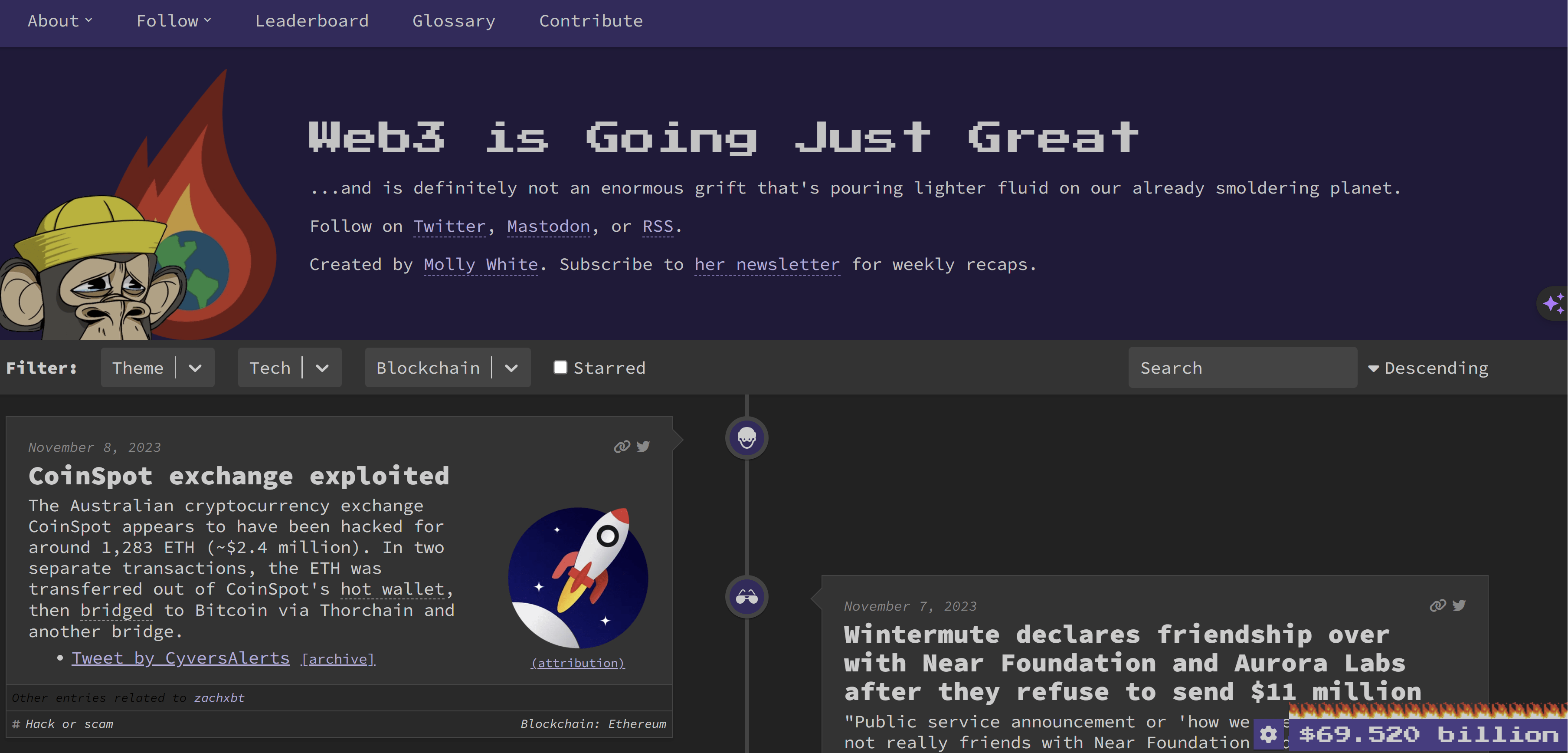
Key Web3 Projects And Innovations
Web3 is fostering a multitude of innovative projects across various domains. These platforms stand out, revolutionizing traditional financial systems with decentralized lending, borrowing, and trading. Similarly, decentralized autonomous organizations (DAOs) offer a new model for organizational governance using blockchain technology.
Gaming and NFTs (Non-Fungible Tokens) are also significant sectors. Play-to-earn gaming models have emerged, where players can earn cryptocurrency or NFTs through gameplay. These games often incorporate blockchain to ensure true ownership of in-game assets.
Moreover, Web3 is also seeing growth in decentralized social media platforms, where users have control over their data and can earn from their online interactions. These platforms challenge the centralized model of current social media giants by offering more privacy and reducing dependency on advertising revenue models. Another niche is domain services.
Spotlight On Prominent Projects
In the vast and varied landscape, certain projects stand out for their innovative contributions and foundational roles in shaping the future of decentralized technology. These projects, which range from infrastructural frameworks to user-centric applications, are not only pioneers in the space but also serve as the building blocks for a new era of the internet. Let’s explore some of the most influential Web3 projects that are leading the charge in this digital revolution.
Ethereum
Ethereum stands as the foundational backbone for a multitude of projects. As a decentralized platform, it not only supports its native cryptocurrency, Ether (ETH), but also enables the creation and operation of decentralized applications (dApps) and smart contracts. Its flexibility and widespread adoption have made it a primary choice for developers in the space.
Solana
Solana gained recognition for its high throughput and fast transaction speeds, favoring its use as a platform for dApps, particularly in the DeFi and NFT sectors. Its unique consensus mechanism combines proof-of-stake with proof-of-history, offering an efficient and scalable solution.
Chainlink
Chainlink is a decentralized oracle network that provides real-world data to smart contracts on the blockchain. It plays a crucial role in the functioning of many decentralized applications, particularly in DeFi, by securely and reliably connecting these apps with off-chain data and services.
Filecoin
Filecoin is a decentralized storage network that allows users to rent out their spare digital storage space. It’s an innovative solution for decentralized data storage, competing with traditional cloud storage providers by offering a more secure and transparent storage ecosystem.
Brave Browser
Brave Browser integrates Web3 functionalities directly into its interface. As a privacy-focused browser, it blocks trackers and ads by default, while also offering users the opportunity to earn Basic Attention Tokens (BAT) for viewing privacy-respecting ads.
Uniswap
Uniswap is a leading decentralized exchange (DEX) operating on the Ethereum blockchain. It uses an automated liquidity protocol, eliminating the need for traditional order books and allowing users to swap ERC-20 tokens directly from their wallets.
Decentraland
Decentraland is a virtual reality platform powered by the Ethereum blockchain. It enables users to create, experience, and monetize content and applications within a virtual world. Decentraland provides a digital landscape where users can purchase and develop virtual plots of land, referred to as LAND tokens. It’s a unique blend of gaming, real estate, and digital art, allowing for a fully immersive virtual experience.

The Sandbox
The Sandbox is another prominent virtual world that leverages blockchain technology. It’s a community-driven platform where creators can monetize voxel assets and gaming experiences on the Ethereum blockchain. In The Sandbox, users have control over their creations and can buy, sell, or trade assets in the form of NFTs. It’s a platform that combines the creative aspects of game design with the financial opportunities of blockchain technology.
Web3 Domains And Their Impact
Domain names are undergoing a revolutionary transformation. A Web3 domain is essentially a domain name registered on a blockchain network, such as Ethereum. These domain names serve multiple functions in the decentralized web.
What Is A Web3 Domain?
A Web3 domain is more than just an internet address. It’s a versatile tool within the blockchain ecosystem. These domains can be used to send and receive cryptocurrency payments, access decentralized applications (dApps), and interact with smart contracts. Unlike traditional crypto addresses, which are long and complex strings of characters, Web3 domains provide a human-readable alternative. This simplifies transactions and interactions, making them more user-friendly.
Transforming Digital Identity And Enhancing Security
Web3 domains represent a significant leap in how digital identities are managed. They provide users with a consistent, portable identity across different services. This feature is particularly valuable in the world of dApps and decentralized finance (DeFi), where seamless interaction is crucial.
Web3 domains enhance security and control, as they are immune to censorship and external interference. Being blockchain-based, they offer a level of decentralization and resilience that traditional domains cannot match. This aspect is critical in an era where digital autonomy and privacy are paramount.
How Web3 Search Engines Reshape Online Search
Web3 search engines, such as W3C, are redefining the landscape of online search with a focus on privacy, decentralization, and user control. Unlike traditional search engines that centralize data and often use it for targeted advertising, Web3 search engines utilize blockchain technology to ensure user privacy and data sovereignty.
These web3 search engines are still evolving but are driven by the vision of a more unbiased and open internet. They aim to provide users with greater control over their digital identities and data, challenging the current norms of data ownership and usage in the online search domain.
The Role Of Web3 Auth In Security
Web3 auth systems, like Ethereum’s ENS (Ethereum Name Service) or uPort, offer a decentralized approach to user authentication, using blockchain technology for enhanced security. They rely on public-private key cryptography, granting users complete control over their digital identities.
This decentralization mitigates risks associated with centralized data repositories, such as data breaches. Web3 auth is integral to building trust and security in the Web3 ecosystem, emphasizing user sovereignty over personal data and offering a more secure, privacy-focused alternative to traditional authentication methods.
How To Invest In Web3
For those new to the space, investing can seem daunting, but it offers exciting opportunities. The first step is understanding the basics of blockchain technology and the types of assets available, including cryptocurrencies, NFTs (Non-Fungible Tokens), and tokens associated with specific Web3 projects.
Beginners should start by investing small amounts in well-established decentralized applications. It’s also crucial to use reputable exchanges and wallets for transactions and storage, and to stay updated with the latest trends and developments in the space.
A Beginner’s Guide: How To Access Web3
For newcomers to Web3, understanding how to connect and interact with decentralized applications (dApps) is fundamental. The key to this interaction is a crypto wallet, which acts as your digital identity and gateway to the Web3 world.
MetaMask is the most popular browser extension wallet and it is widely used for its ease of use and integration with Ethereum-based applications. Alternatively, privacy-focused browsers like Brave offer built-in wallets, providing an additional layer of security and convenience.
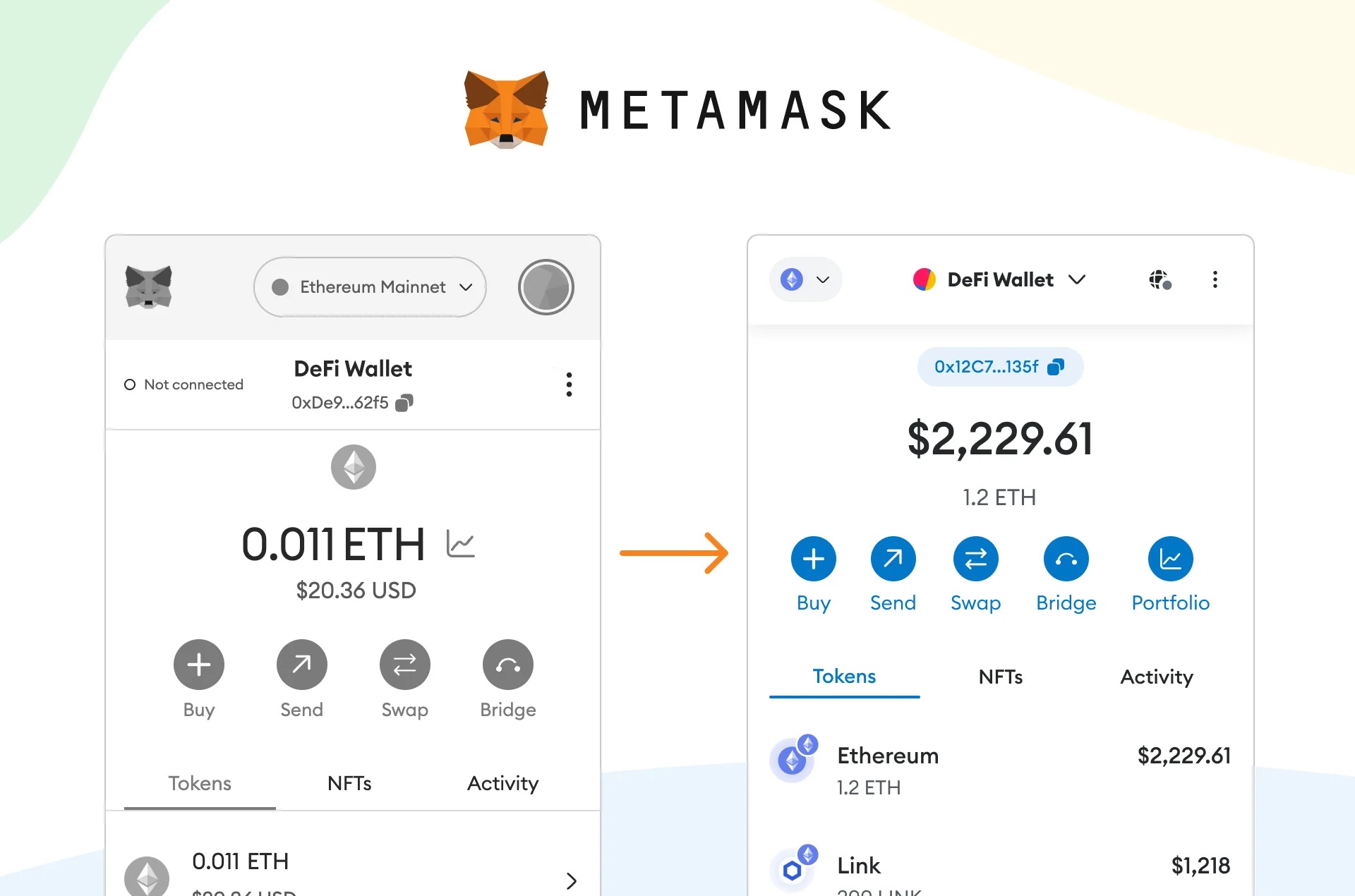
Identifying Promising Web3 Projects
Investing in Web3 goes beyond just buying cryptocurrencies. Identifying promising projects requires research into the project’s vision, team, technological innovation, and community support. Look for projects that solve real problems and have a clear use case.
DeFi platforms, infrastructure projects, and dApps with a growing user base are often good starting points. Diversifying investments across different types of assets and projects can help mitigate risks. You should be aware of the risks involved with any investment. Among other, these include market volatility and regulatory changes. Also, you should only invest what you can afford to lose.
Frequently Asked Questions (FAQ)
What Is The Web3 Meaning?
Web3 meaning refers to the next generation of the internet, characterized by decentralization, blockchain technology, and user sovereignty.
What Is “Web3 Is Going Great”?
“Web3 is going great” typically refers to the positive developments and advancements in the space, despite challenges.
What Is Web3 Technology?
Web3 technology encompasses blockchain, decentralized applications, and systems that empower users over centralized authorities.
Can You Provide A Web3 Definition?
Web3, using blockchain technology, establishes a decentralized web that ensures user control and data privacy.
What Are Some Most-Well Known Web3 Projects?
Notable Web3 projects include Ethereum, Solana, Filecoin, and decentralized finance platforms like Uniswap.
What Are Web3 Domains?
Blockchain-based domain names in Web3 provide user-controlled, decentralized digital identity solutions.
How Does A Web3 Search Engine Work?
A Web3 search engine operates on decentralized networks, focusing on privacy and user-controlled data.
Can You Help Web3 Explained In Simple Terms?
Web3 is the decentralized internet, leveraging blockchain to give users control and ownership of their data.
What Differentiates Web3.0 From Previous Versions?
Web3.0 stands out due to its decentralized nature, blockchain integration, and emphasis on user empowerment.
How Does A Web3 Domain Function?
A Web3 domain functions as a user-owned identity on the blockchain, facilitating secure and private online interactions.
What Is Web3 Auth And Its Importance?
Web3 Auth is a decentralized authentication system ensuring enhanced security and user control in decentralized applications.
Whats Web3 And Its Impact On The Digital World?
Web3 represents a shift to a decentralized internet, significantly impacting digital identity, finance, and data ownership.
How Is The Web3 Market Cap Evolving?
The Web3 market cap is evolving with the growth of cryptocurrencies and the increasing valuation of projects.
What Are The Best Web3 Crypto Investments?
The best Web3 crypto investments often include major cryptocurrencies and tokens of promising decentralized projects.
How Is Web3 NFT Changing The Art World?
Web3 NFTs are revolutionizing the art world by enabling digital ownership, provenance, and new forms of artistic expression.
What Is The Role Of Web3 Music In The Industry?
In Web3 music, blockchain-based platforms transform the creation, distribution, and monetization of music.
How Does Web3 Storage Revolutionize Data Management?
Web3 storage, through decentralized networks, offers more secure and user-controlled data management solutions. Filecoin is the most popular network at the moment.
What Opportunities Exist In The Web3 Space?
Opportunities in Web3 include investment in cryptocurrencies, participation in decentralized governance, and the development of dApps.
Are There Unique Web3 Memes?
Yes, there are unique Web3 memes that often reflect the culture, humor, and trends within the community.
What Are The Emerging Trends In Web3 Investments?
Emerging trends in Web3 investments include DeFi, NFTs, metaverse projects, and cross-chain interoperability solutions.
Can You Define Web3 In A Few Words?
Web3, in a few words, is a decentralized, blockchain-powered version of the internet emphasizing user control and data privacy.
Featured image from collectID
Web3 developer Thirdweb boosts bounty to $50,000 in light of fresh smart contract security risks

Thirdweb, a Web3 software development kit (SDK) provider, confirmed the presence of a security vulnerability in a widely used open-source library, impacting numerous Web3 smart contracts, according to a Dec. 4 statement on social media platform X (formerly Twitter).
The firm stated that the vulnerability was initially identified on Nov. 20 and impacted a variety of smart contracts across the web3 ecosystem, including some of its pre-built smart contracts.
However, it clarified that the vulnerability has yet to be exploited and refrained from disclosing the open-source library to prevent potential exploitation. The firm wrote:
“Based on our investigation so far, this vulnerability has not been exploited in any thirdweb smart contracts. However, smart contract owners must take mitigation steps on certain pre-built smart contracts that were created on thirdweb prior to November 22nd, 2023 at 7pm PT.”
Affected smart contracts
Thirdweb identified 13 affected smart contracts, including AirdropERC20, ERC721, ERC1155, and others, impacted by the vulnerability.
Smart contract owners are advised to take proactive mitigation steps to prevent exploitation. Additionally, Thirdweb assured ongoing efforts with security partners to develop tools for easy identification and execution of necessary mitigation measures.
Depending on the contract’s nature, these steps might involve contract locking, snapshot creation, and migration to a new contract. Additionally, users of these contracts are encouraged to revoke approvals on all Thirdweb contracts.
Thirdweb is also increasing the bounty rewards for its platform to $50,000 and is implementing a more rigorous auditing process.
Meanwhile, 0xngmi, the pseudonymous developer of DeFillama, urged the community to revoke their approvals to thirdweb contracts because people might have interacted with them without knowing as they are white-labeled.
NFT projects respond
Several NFT projects, including OpenSea, have responded to concerns raised by the vulnerability.
OpenSea confirmed discussions with Thirdweb regarding security concerns in specific NFT collections. The NFT platform hinted at forthcoming support for affected collection owners and anticipated changes related to contract migration on their platform.
Some NFT collections like CoolCats and ApesRare have reassured their holders they are not affected by these vulnerabilities.
However, Thirdweb’s disclosure approach has received criticism within the community.

Smart contract development firm Thirdweb reported a security vulnerability that potentially “impacts a variety of smart contracts across the Web3 ecosystem.”
On Dec. 4, Thirdweb reported a vulnerability in a commonly used open-source library that could impact specific pre-built smart contracts, including some of its own. However, Thirdweb’s investigations concluded that the smart contract vulnerability has not yet been exploited, allowing a small window of opportunity for Web3 firms to avoid a possible hack.
Highlighting the vulnerability’s potential to cause massive damage if not rectified immediately, Thirdweb stated:
“The impacted pre-built contracts include but are not limited to DropERC20, ERC721, ERC1155 (all versions), and AirdropERC20.”
Following the proactive warning to Web3 ecosystem, the firm cautioned users who deployed its contracts before Nov. 22 to “take mitigation steps” independently or by using a company-provided tool.
IMPORTANT
On November 20th, 2023 6pm PST, we became aware of a security vulnerability in a commonly used open-source library in the web3 industry.
This impacts a variety of smart contracts across the web3 ecosystem, including some of thirdweb’s pre-built smart contracts.…
— thirdweb (@thirdweb) December 5, 2023
Thirdweb also advised developers to help users revoke approvals on all affected contracts using revoke.cash, “which will protect your users if you choose not to mitigate the contract,” DefiLlama developer “0xngmi” commented on the request to revoke approvals.
btw this seems important, theyre asking to revoke all approvals to third web contracts (you might have interacted with them without knowing as theyre white-labelled, especially if you do stuff around nfts) https://t.co/T1YU9xnIRb
— 0xngmi (@0xngmi) December 5, 2023
Thirdweb has contacted the maintainers of the open-source library at the root of the vulnerability and contacted other teams potentially impacted by the issue.
It also pledged to increase investment in security measures and double bug bounty payouts from $25,000 to $50,000 while implementing a more rigorous auditing process. The firm also offered a grant to cover contract mitigations.
“We understand that this will cause disruption, and we are treating the mitigation of the issue with the utmost seriousness. We will be offering a retroactive gas grant to cover fees for contract mitigations.”
Full details of the vulnerability were not disclosed for security purposes, and Cointelegraph contacted Thirdweb for further updates but was redirected to the blog post.
Related: 5 smart contract vulnerabilities: How to identify and mitigate them
The firm raised $24 million in a Series A funding round with Haun Ventures, Coinbase, Shopify and Polygon in August 2022.
The Web3 company, which provides multichain smart contract deployment tools for gaming, minting, marketplaces and wallets, claims to have more than 70,000 developers using its services monthly.
Magazine: Real AI use cases in crypto: Crypto-based AI markets, and AI financial analysis

South Korean gaming giant Wemade has begun a collaboration with the Dubai Chambers, a non-profit public entity, to enhance the development of blockchain gaming ecosystems in Dubai and the wider UAE region, according to a Nov. 28 press release.
The deal was officiated through a meeting between Wemade CEO Henry Chang and Dubai Chambers President and CEO H.E. Mohammad Ali Rashed Lootah.
Dubai Chambers is known for championing the interests of the Dubai business community and plays a pivotal role in connecting businesses with the government and nurturing a conducive environment for business growth.
It consists of three separate entities – the Dubai Chamber of Commerce, Dubai International Chamber, and Dubai Chamber of Digital Economy; prior to 2021, all of these entities existed under one entity: the Dubai Chamber of Commerce and Industry. It was restructured in 2021 into its current arrangement of three distinct entities.
Wemade partnership
As the first major South Korean game developer to engage in formal discussions with Dubai Chambers, Wemade has set a precedent for international cooperation in the gaming industry.
Wemade said the venture is a testament to its commitment to fostering blockchain gaming ecosystems — an area where Dubai and the UAE have shown considerable dynamism. Under the deal, Wemade will leverage its expertise in gaming development to support key initiatives, including the Dubai Program for Gaming 2033.
Chang expressed enthusiasm about contributing to Dubai’s dynamic gaming sector and aiding in nurturing the next generation of gaming industry talent. From the perspective of Dubai Chambers, this alliance is a strategic move to innovate and advance Dubai’s digital ecosystem.
Dubai’s Digital Economy Ambitions
Dubai is one of a handful of jurisdictions that have established a comprehensive regulatory framework for the crypto industry in recent months, including setting up a regulator specifically for digital assets.
The Emirate has managed to attract major players in the industry, like Binance, through its proactive approach to regulating the sector and has continued to build upon that foundation as part of a larger goal to become a digital economy.
Earlier in November, Sheikh Hamdan bin Mohammed bin Rashid Al Maktoum, the Crown Prince of Dubai, officially unveiled The Dubai Program for Gaming 2033, an ambitious plan that exemplifies the Emirate’s vision to establish a thriving new industry. The Emirate has set its sights on becoming one of the top 10 cities in the gaming industry. The city is particularly interested in the Web3 gaming sector.
Dubai believes establishing a strong gaming industry in the city can contribute an additional $1 billion to its GDP by 2033. The city wants to create 30,000 new gaming-related jobs within the next decade.





